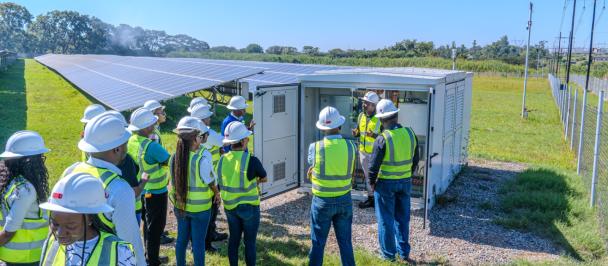Spring Meetings, April 2024
United Nations Statement to the International Monetary and Financial Committee (IMFC) of the Board of Governors
April 19, 2024
“A serious conversation will be needed between developed and developing countries, between rich and emerging economies, between North and South, East and West. These efforts will require reforming institutions that were built by a bygone world, for a bygone age”.
Antonio Guterres
Priorities for 2024 at the UN General Assembly
February 7, 2024
Global economic outlook: Moving beyond global averages
Slow growth, high interest rates and debt vulnerabilities continue to shape the global economic outlook. There is both a ‘soft landing’ narrative for advanced economies and a ‘non-soft landing’ scenario for developing and emerging economies. In addition, policymakers are starting to diverge in their responses to different moments in the macroeconomic cycle. Data points, that look beyond global averages, highlight risks and vulnerabilities that impair a robust recovery:
Over the past decade, public debt as a percentage of GDP has risen more than 16 percentage points for the median developing economy, bringing debt back to levels last seen in the early 2000s. Over roughly the same period, the share of private creditors in public external debt has risen from 41 to 63 percent.
As a share of revenue, net-interest payments have almost doubled over the last decade for the median developing economy, — and has in the poorest region Sub-Saharan Africa now reached almost 10 percent up from 3.5 percent a decade ago.
In total, 48 developing economies spend more than 10 percent of government revenue on making net-interest payments up from 28 countries a decade ago, — and for 10 countries interest payments consume more than one quarter of total revenue.
Debt servicing on public external debt is also back at record levels in many countries. In 2023, total external debt servicing was estimated to be higher than 20 percent of revenue in 25 countries and this year in 24 countries, — a number of countries not seen this high since the year 2000.
Especially worrying this and next year are high external debt service payments in the poorest countries. After a little respite in 2022, external public debt servicing for the group is expected to peak this year at $175 billion, — a more than 50 percent increase from 2022 – of which $126 billion are principal payments.
While global financial market conditions have eased over the past 6 months, thereby also re-establishing market access for some countries, the group of developing economies with relatively lower credit ratings pay a high price for raising new, or refinancing existing, debt. As an example, the average yield on hard currency sovereign bonds for African issuers is still about 250 basis points higher than before COVID.
In total, more than half of developing economies with a credit rating are considered below ‘non-investment grade’, and more than half of the poorest countries with debt sustainability assessed under the LIC-DSF methodology are either rated in or at high risk of debt distress.
The consequences of slow growth, high interest rates and debt servicing rates continue to impact developing and emerging economies.
The World Bank estimates that in IDA-eligible countries on average, total (domestic plus external) debt servicing in 2024 will be higher than the combined public spending on health, education and infrastructure.
UNDP has estimated that the average low-income country spends 2.3 times more on servicing net-interest payments than on social assistance, 1.4 times more than on domestic health expenditures or 60 percent of what it spends on education.
UN’s Global Crisis Response Group (GCRG) has estimated that in total, 48 countries are home to 3.3 billion people whose lives are directly affected by underinvestment in education or health due to large interest payments.
Support for the IMF’s work
At the last board meeting, IMF members supported a fifty percent increase in permanent lending resources. The Fund is now directing its attention to how to make better use of its balance sheet to ensure that it is well-positioned to continue to help its members –including some of its poorest members. The UN development system supports the strengthening of the IMF to:
Continue its efforts to ensure that developing economies gain access to an effective and fair process of restructuring debt when needed: This goes both for countries that need rescheduling of payments, as well as for countries in need of more comprehensive debt treatment.
Increase access to liquidity support given this and coming years’ high refinancing needs, particularly pressing in many of the poorest countries, and improve the responsiveness of funding access during shocks for vulnerable countries.
Consider reviews on surcharges policy: As precautionary balances at the IMF are reaching targets, the UN development system encourages the board to review its surcharges policy, paid by twenty-two countries, up from eight in 2019. This would help a number of emerging economies; those who need resources the most are penalized the most.
Support efforts to recycle and leverage more Special Drawing Rights (SDRs), including by way of supporting MDBs: The Boards of Governors of the IMFC should seize the opportunity originally conceived by the African Development Bank and Inter-American Development Bank to support the re-channeling of SDRs aimed at strengthening MDB balance sheets and long-term lending capacity. Building on proposed initiatives, countries with excess SDRs should re-channel an additional $100 billion worth of unused SDRs overall.

 Locations
Locations


